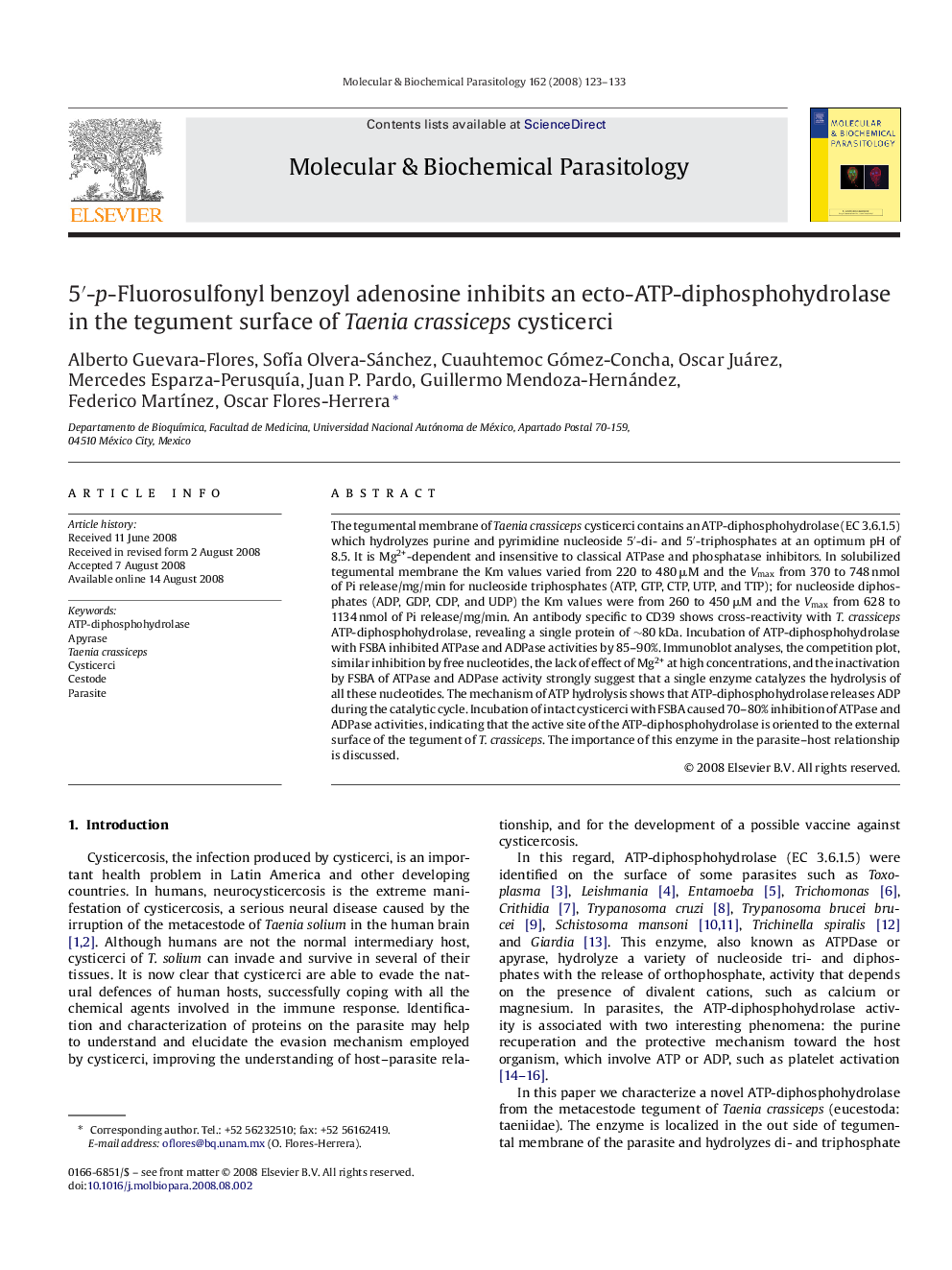| Article ID | Journal | Published Year | Pages | File Type |
|---|---|---|---|---|
| 2830059 | Molecular and Biochemical Parasitology | 2008 | 11 Pages |
Abstract
The tegumental membrane of Taenia crassiceps cysticerci contains an ATP-diphosphohydrolase (EC 3.6.1.5) which hydrolyzes purine and pyrimidine nucleoside 5â²-di- and 5â²-triphosphates at an optimum pH of 8.5. It is Mg2+-dependent and insensitive to classical ATPase and phosphatase inhibitors. In solubilized tegumental membrane the Km values varied from 220 to 480 μM and the Vmax from 370 to 748 nmol of Pi release/mg/min for nucleoside triphosphates (ATP, GTP, CTP, UTP, and TTP); for nucleoside diphosphates (ADP, GDP, CDP, and UDP) the Km values were from 260 to 450 μM and the Vmax from 628 to 1134 nmol of Pi release/mg/min. An antibody specific to CD39 shows cross-reactivity with T. crassiceps ATP-diphosphohydrolase, revealing a single protein of â¼80 kDa. Incubation of ATP-diphosphohydrolase with FSBA inhibited ATPase and ADPase activities by 85-90%. Immunoblot analyses, the competition plot, similar inhibition by free nucleotides, the lack of effect of Mg2+ at high concentrations, and the inactivation by FSBA of ATPase and ADPase activity strongly suggest that a single enzyme catalyzes the hydrolysis of all these nucleotides. The mechanism of ATP hydrolysis shows that ATP-diphosphohydrolase releases ADP during the catalytic cycle. Incubation of intact cysticerci with FSBA caused 70-80% inhibition of ATPase and ADPase activities, indicating that the active site of the ATP-diphosphohydrolase is oriented to the external surface of the tegument of T. crassiceps. The importance of this enzyme in the parasite-host relationship is discussed.
Related Topics
Life Sciences
Biochemistry, Genetics and Molecular Biology
Molecular Biology
Authors
Alberto Guevara-Flores, SofÃa Olvera-Sánchez, Cuauhtemoc Gómez-Concha, Oscar Juárez, Mercedes Esparza-PerusquÃa, Juan P. Pardo, Guillermo Mendoza-Hernández, Federico MartÃnez, Oscar Flores-Herrera,
